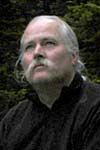I have been considering my new page layout and navigation experiment (see the previous blog entry and Eastern Washington) for a couple of weeks now. I have decided that I like it, and will begin gradually switching the site over to this new system.
First up - the Cascade Range of Washington. The number of panos here has gone up from 48 to 144 and features a great series along the Spirit Lake Highway leading to Mount Saint Helens.
This is one of the most dramatic parts of the Pacific Northwest, a chain of mighty volcanoes atop a rugged older range, set in a matrix of ancient forests. I first fell in love with it when my family drove from California to Seattle for the World's Fair in 1962, spending a beautiful sunny day in the meadows at Paradise on Mount Rainier. Over the years since then I have been back to Rainier several times, as well as most other major parts of the range.
New panoramas in this guidebook:
The North Cascades: Skagit River, the town of Diablo, Diablo and Ross Lakes, Washington Pass, and the Cascade River Road. These were mostly photographed in August 2006. They are all in, or on the edge of, North Cascades National Park, and along the North Cascades Highway. The scenery is stunning, and I was blessed with good weather. You can see me enjoying an evening in camp on the Cascade River (standard size or fullscreen).
Roslyn, also known as Cicely, Alaska (in the television series Northern Exposure), photographed August 16, 2006. I will write more about this interesting town later.
Sunrise, in Mount Rainier National Park, also from August 2006. I was planning a longer stay and to re-photograph the Paradise area also on this trip, but encountered some pretty severe obstacles. First, there was a huge forest fire to the northeast and visibility was poor and getting worse, plus the smoke was giving me breathing problems, especially when hiking.
But then a real disaster - the tripod mounting socket tore right out the bottom of my camera! It was really my fault, not the camera's, I was putting far too much strain on the socket with my heavy VR mount. It broke when I was hauling it carelessly out of the backpack. Live and learn. I took one final pano at Shadow Lake (standard size or fullscreen) hand-held, then called it quits. As it turned out, that was my last pano of the summer.
Mount Saint Helens was big news when it erupted explosively in May of 1980. Since then the area has been evolving steadily, the forests growing back and streams running clear. The volcano itself has had a series of smaller eruption, and is still emitting blue smoke and occasional clouds of ash. But the big change has been tourism - creation of Mount Saint Helens National Volcanic Monument and the building of a major highway approaching the mountain from Interstate 5 to the west. I revisited Mount Saint Helens in August 2007.
The Spirit Lake Memorial Highway offers a tantalizing series of views ahead to the mountain as it winds along ridges above the Toutle River. There are four major visitor centers along the route. The largest is at Coldwater Ridge, but the most popular and dramatic is right at the end of the road, the Johnson Ridge Observatory. Less traveled by far are the roads that approach Mount Saint Helens from the east side, leading to Windy Ridge.
The Cascades are densely forested from sea level to timberline, and significant areas of old growth remain among the checkerboard of clearcuts. In August 2007 I spent some time in these wonderful forests, primarily on lower Iron Creek in the Cispus River basin, and at Cedar Flats on the Muddy River. The Iron Creek campground is an experience in itself, a chance to camp among towering Douglas firs (standard size or fullscreen). Most of these panos were taken on the nature trail that circles the campground. The Cedar Flats Research Natural Area was set aside to protect the giant western red cedars growing there in swampy conditions, but also contains big trees of several other species.
A series of forest service roads give access the south side of Mount Saint Helens, including Ape Cave. At two miles this is the longest lava tube cave in North America. The Lewis River has more beautiful forests and lots of waterfalls.
The Cascade Range is cut right across by the mighty Columbia River, protected on both sides as the Columbia River Gorge National Scenic Area. The Oregon side, with hundreds of waterfalls, gets most of the attention. But the Washington side of the Columbia River Gorge is beautiful, too. Bonneville Dam blocks the river and submerges the historic Cascades for which the river was named. It is an interesting place to visit, with its powerhouse and fish ladders.
Future plans for panography in the Cascades? First of all I badly need to rephotograph the Paradise area on Mount Rainier in early summer. And I have always wanted to approach Mount Rainier from the west side, up the little-used Carbon River and Westside Roads. I tried to do this in 2007, but all the roads were washed out. I would also like to backpack into the Glacier Peak Wilderness, and take the long boat ride up Lake Chelan to Stehekin again.
Subscribe to:
Post Comments (Atom)

No comments:
Post a Comment